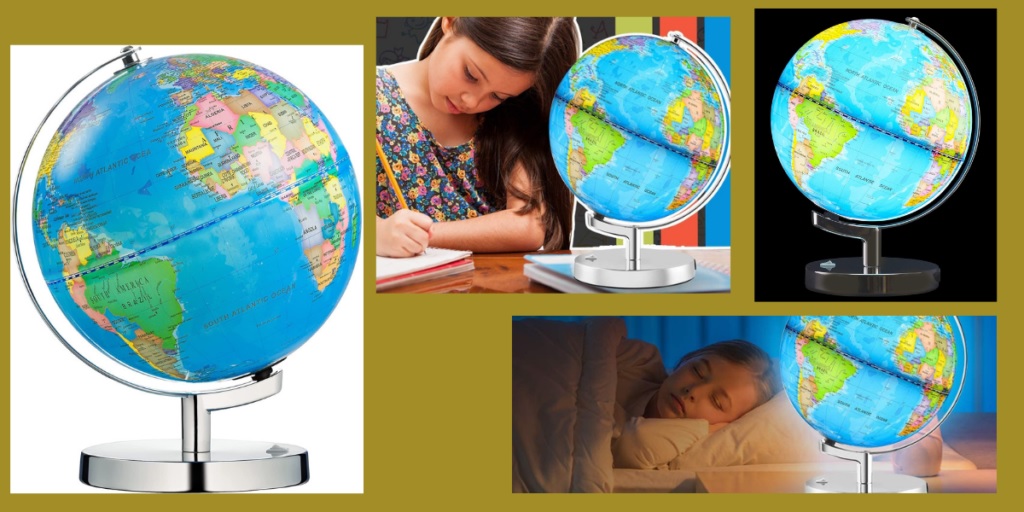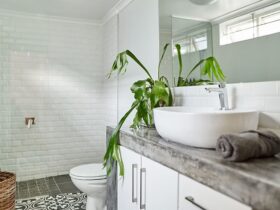To help you make your decision, we’ve narrowed down the considerations to three things: size, color, features, and purpose. Each criterion is essential in buying a globe, and we will see why.
The Size Of The Globe
When buying a terrestrial globe like replogle, one of the main elements to consider is the choice of the size of the globe and its support. If it is too small, it can potentially get lost in your decor or not provide enough information about the names of countries or oceans. Otherwise, if it is too large, it risks taking up considerable space and could clutter up your room or office.
We advise you to measure the space where you plan to place your globe to judge which size best suits your needs. Then refer to the size written on the product page in the description part, keeping in mind that the diameter of a globe may not correspond to the space required. Floor globes often include a wooden or metal ring around the sphere, which requires more space.
The standard size of a desktop globe is 30 cm in diameter. These dimensions have been chosen to best suit the standards of rooms in a house or office.
If you want to decorate a larger space such as an entrance hall, an extensive library, or generally a larger space, your choice should be a globe with a diameter of 50 cm or more. In addition, the larger the globe, the more detailed information it will contain. Note that a terrestrial globe of this type is difficult to find and that the price will be high. Terrestrial globes are measured by their diameter, the distance that passes through the globe’s middle. Most globes are made in standard sizes.
- Small terrestrial globes: 12 cm in diameter
- Medium desktop globes: 30 cm in diameter
- Medium-sized floor globes: 50 cm in diameter
- Large globes: more than 50 cm in diameter
The Color Of The Globe
When choosing a decorative object or National Geographic globes, color is one of the most important criteria. Styles classify our terrestrial globes in well-defined collections to facilitate navigation and allow you to compare nearby globes to select the right one.
For the color of your terrestrial globe, you can choose a classic terrestrial globe with oceans of blue color and continents of several colors. You can choose a terrestrial globe with old colors or choose a globe in a color that is out of the ordinary, like a black globe, a white globe, or a purple globe.
Most people think of the land with blue oceans. We recommend blue ocean globes for children and students because they are classic globes that provide the most condensed and easy-to-understand information.
Antique-type oceans refer to the color of parchment paper that gives an antique look to the globe. These globes feature current cartography and only have an old color. Retro/vintage style world globes are the most popular for home and office decoration. It should be noted, however, that not all colors are represented in all sizes or all different mediums. It is, therefore, necessary to consider the 3 criteria together to determine your final choice and find the globe best suited to your needs.








